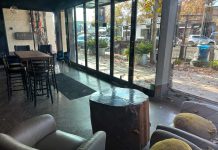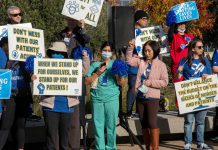Gilroy
– It will be eastbound drivers on state Highway 152 flying over
the rest of the traffic at 152’s thorny intersection with state
Route 156.
Gilroy – It will be eastbound drivers on state Highway 152 flying over the rest of the traffic at 152’s thorny intersection with state Route 156.
That is the configuration the Santa Clara Valley Transportation Authority has approved for a rebuild of the crossroads east of Gilroy – a linchpin in the popular Pacheco Pass connection between the Silicon and Central valleys.
Meanwhile, the projected cost has risen $4.25 million since March, to $27.25 million. The estimate is still lower than it was in October, when it was $35 million.
“Commuters, residents and property owners in this area have been anticipating congestion relief at this intersection,” said VTA Chairman Don Gage, also a Santa Clara County supervisor and Gilroy resident.
The project was promised in 1996 ballot Measure B, but that half-cent sales tax couldn’t cover the costs. Many feared it would be further delayed after the cash-strapped state rejected funding for it early this year, but the Metropolitan Transportation Commission in March decided to spend $11.5 million in federal funds on the junction.
The project is still awaiting several million dollars from a federal highway bill that is stalled due to a budget standoff between Congress and the president. Also in limbo are revenue the governor is trying to secure from negotiating with casino-operating Indian tribes.
Still, VTA spokeswoman Brandi Hall said these funds are likely to go through.
“It is a prioritized project, so it’s got better hope than others,” Hall said.
The problem is, during heavy traffic, “good Samaritan” motorists heading east on 152 from Gilroy often stop at the intersection – although they have no stop or yield sign – to let stacked-up westbound drivers make the turn. This can cause eastbound cars and trucks to back up all the way to Gilroy, about 13 miles.
At peak times, an average of 4,100 vehicles per hour pass through the Pacheco Y, according to Caltrans data obtained in the fall. The daily average is 53,000 vehicles. Highway 152 is popular because it is one of the few connections between the coastal region and the Central Valley and I-5; there’s no other for 50 miles to the north or 30 miles to the south.
The design phase of the project is now 65 percent done. Next comes an environmental impact report, public hearings, final approvals and the bid process.
The VTA expects to begin construction in early 2006 and finish 18 months later.













